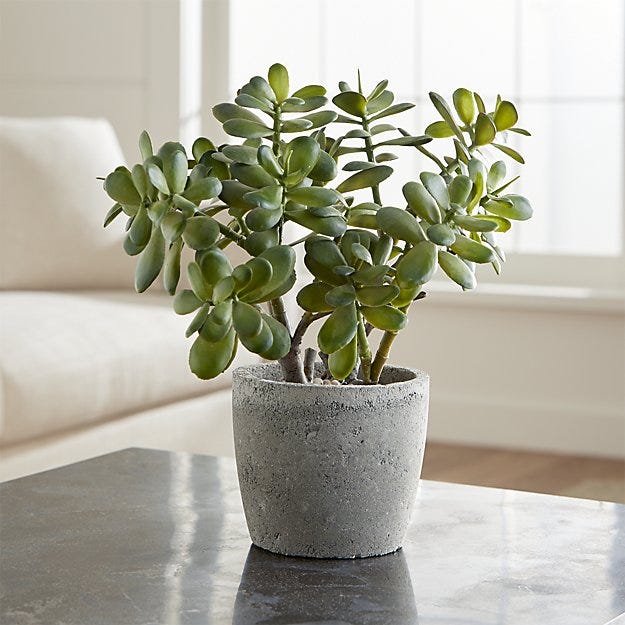Hide yo kids, hide yo pets!
Okay, not really. Definitely hide plants, not your child or pet!
We get a lot of questions from folks asking about whether or not our succulents are poisonous to their pets. The succulents we grow and ship are usually not poisonous to pets or humans, but we do suggest keeping plants out of the way just in case (easier said than done, we know), and to seek medical advice if you think your pet or child is having a reaction to a plant (see the link to ASPCA’s list of toxic plants at the bottom of this post). As diehard plant lovers, we’d like all plants to be safe for everyone, but some are surprisingly toxic to kids and pets. So rude, right?
Here are 5 common houseplants to avoid:
Philodendron

Philodendrons are one of the most commonly known houseplants, but also one of the most toxic. Also known as fiddle leaf figs, the leaves contain crystals made from toxic calcium oxalate. For adults, a bite out of a fiddle leaf won’t kill you, but for children and pets, all philodendrons can be highly toxic.
Arrowhead plant

The unique leaves and color patterns of the arrowhead plant make them a popular and appealing indoor plant. Unfortunately, the side effects of their sap is dangerous for both humans and pets. Also known as the goosefoot plant, their sap’s toxic elements can lead to skin irritation and vomiting. An adult arrowhead will also shed many leaves and regrow them, so with kids and pets around it’s important to keep an eye on falling leaves.
Aloe Vera

Aloe vera’s gel is a natural healer for minor cuts and burns, but the aloe vera plant actually contains several toxic agents on the outer layers of their skin. This special skin, found beneath their hard outer layer, is made up of a chemical similar to latex. For those allergic to latex, it is safer to just avoid contact with the plant’s layers or it may lead to significant skin irritation.
Snake plant

The snake plant is a personal favorite for the house (following succulents, of course). Thankfully, the snake plant isn’t super toxic to humans, but it doesn’t share the same love for our furry friends. Also known as the ‘good luck plant,’ the snake plant can lead to vomiting and nausea when ingested by pets.
Jade plant

The jade plant (Crassula ovata) is one of the toxic family members of the Crassula family. They’re best kept in hard-to-reach places, as this specific kind of jade plant can be toxic to pets. Their harmful principles set them apart from other members of the jade family, like the Ripple Jade.
Our general rule for houseplants is this: a little bit of research goes a long way to keep your family, fur babies, and houseplants living in harmony. On the first of every month, we use social media to announce the two succulents that will be included in that month’s box. Follow us on Facebook or Instagram to see these posts, and then (this is the important part) CHECK the ASPCA’s list of toxic plants to see if they’ll cause a problem in your home. If you think they might, just gift or skip that month via your account page on our website.
Follow us on Facebook, Twitter and Instagram to learn more about our second-generation nursery and succulent subscription!







Leave a Reply